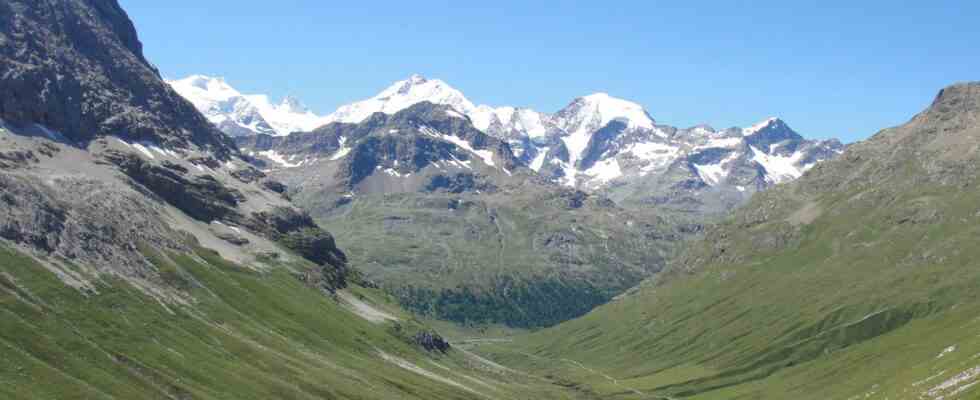Status: 06/03/2022 10:39 a.m
Researchers from Switzerland have evaluated many satellite images. Their conclusion: The Alps are getting greener and greener. What sounds like good news is actually a big problem. This is because the great diversity of species is threatened.
According to a study, the Alps are becoming greener and greener due to climate change. The vegetation has increased above the tree line in almost 80 percent of the Alps, researchers from the Universities of Lausanne and Basel write in the journal Science. Satellite images from the years 1984 to 2021 were evaluated for the study.
What initially sounds like good news is actually the opposite. Because a characteristic feature of high mountains is that there are different climate zones – with animals and plants that have specially adapted to these zones. Climate change changes, among other things, the temperature and the amount and distribution of precipitation. As a result, the climatic zones are also migrating upwards, which is a problem especially for plants and animals that are specialized in cooler climates.
“Adapted but not very competitive”
Climate change thus threatens the great biodiversity that exists in the mountains. “The extent of the change in the Alps turned out to be absolutely massive,” says Sabine Rumpf from the University of Basel. Plants colonized new areas and vegetation generally became denser and taller.
This effect could threaten the special alpine flora. “Alpine plants are adapted to harsh conditions, but not very competitive,” says Rumpf. If environmental conditions changed, these specialized species would lose their advantage and be displaced by other species. “The unique biodiversity of the Alps is therefore under considerable pressure,” the researcher continues.
Trees in the Alps only grow up to certain altitudes – but the growth limit has shifted.
Image: BR/Foot
“The mountains are growing”
A citizen research project in Bavaria, the first results of which were published in early April, came to a similar conclusion. For the “Explore tree lines” project, mountain hikers took photos of certain tree species, which were then scientifically evaluated and compared with historical data.
Depending on the species, trees need, among other things, a certain temperature in order to be able to grow. If it is too cold at an altitude and the vegetation period is too short, they will not survive. The result of the citizens’ project is that the growth limits of tree species have shifted significantly upwards – by up to 400 meters in altitude since the middle of the 19th century. “The mountains are growing,” says Jörg Ewald from the Weihenstephan-Triesdorf University of Applied Sciences on the preliminary results of the hands-on project.
More and more from white to green
In contrast to the vegetation, the snow cover above the tree line has changed only slightly since 1984, according to the study by the Universities of Lausanne and Basel. The respective snow depth could not be determined exactly from the satellite images, it said. In any case, with global warming, the Alps would turn from white to green more and more.
“Greener mountains reflect less sunlight and therefore lead to further warming – and thus to a further shrinkage of the reflective snowpack,” explains Rumpf. Higher temperatures have caused glaciers to melt and permafrost to thaw, which could trigger more landslides, rockfalls and debris flows.

